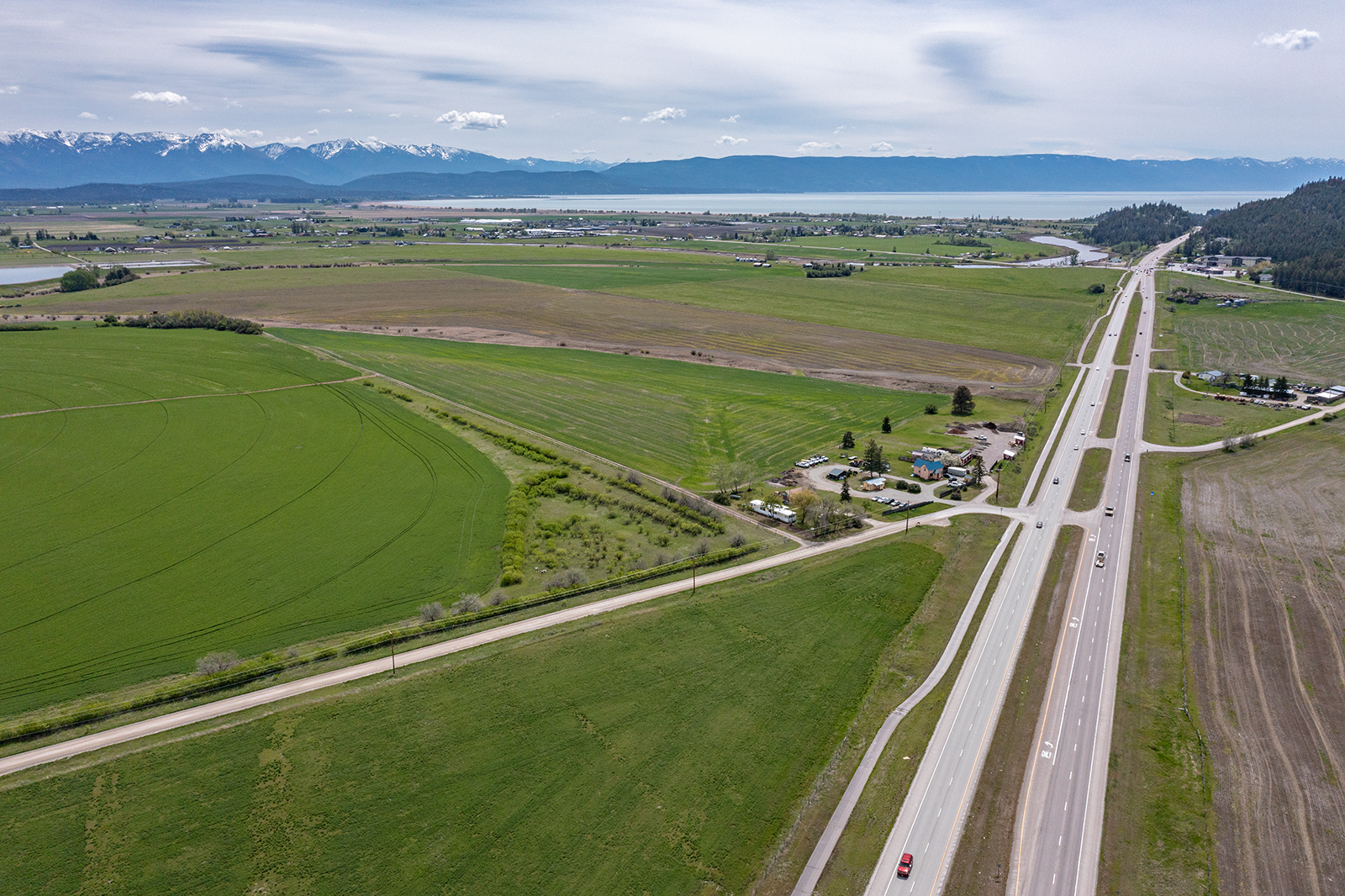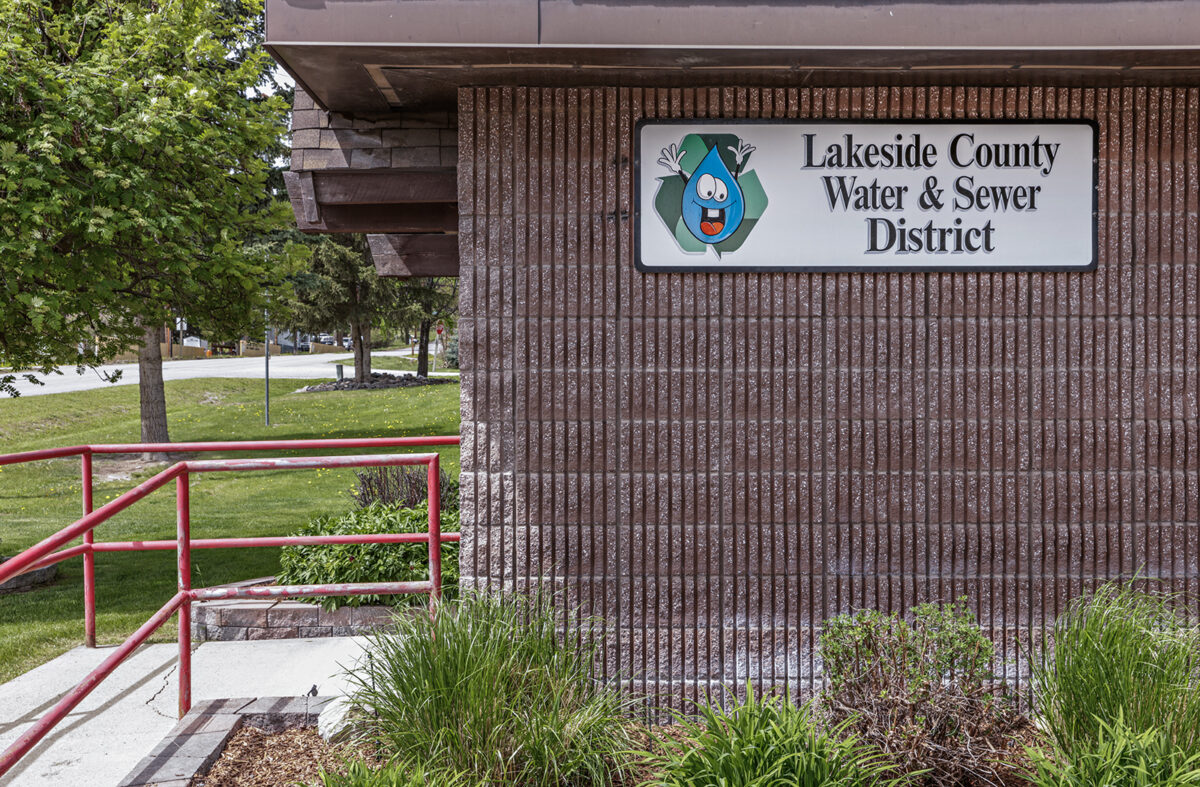As State Regulators Weigh Public Input on Wastewater Facility Overhaul, A Tale of Two Treatment Systems Emerges
Flathead County officials say the decision to partner with a local water and sewer district was born of a mutual need to upgrade outmoded systems and serve the region’s growing population. Meanwhile, a water-quality watchdog group says disposal of wastewater into an aquifer near Flathead Lake deserves a higher level of scrutiny.
By Zoë Buhrmaster
A proposed wastewater treatment plant is generating a mix of controversy and support as the state Department of Environmental Quality (DEQ) seeks public comment on a permit to allow a local sewer district to discharge treated wastewater into the groundwater at a site two miles north of Flathead Lake.
With rising development in the Flathead Valley, local municipalities are in dire need of solutions to accommodate the increase in wastewater. Over the past decade, the Board of Flathead County Commissioners has discussed the growing need for solutions, crafting a plan in 2021 when federal funding for the project became available through the American Rescue Plan Act (ARPA).
The county originally planned to construct a regional septage and compost facility, entering into an agreement in September 2023 with the Lakeside County Water and Sewer District (LCWSD). Under the agreement, the LCWSD, which was already looking to upgrade its 40-year-old system, would receive the county’s wastewater for additional treatment once it had been diluted to residential-strength wastewater. In March 2024, the county and district coalesced their plans into one for the efficiency of building a single facility for both the district and the county with a higher-grade operating plant and treatment system.
Flathead County Project Manager Whitney Aschenwald said that the decision to partner with Lakeside came after much deliberation and discussion with all the wastewater treatment municipalities in the county.
“It kind of just came down to a combination of Lakeside was a willing partner, they recognized the need for the project and they stepped up to partner with the county and finding a spot of available land nearby that was for sale and for a reasonable price,” Aschenwald said.
County septage from septic tanks and port-a-potties produces a higher strength waste than residential water, which is diluted through household amenities such as showers and dishwashers. Aschenwald underscored that a crucial improvement with the new system would be treating the high-strength waste that is otherwise deposited as-is.
“Right now, in Flathead County most septage in port-a-potty waste is dumped directly on fields with no prior treatment, and some of those fields are located in Lower Valley,” Aschenwald said.
Currently, LCWSD uses aerated lagoons in which microbes and air process the effluent in holding ponds for a minimum of 180 days before it is irrigated on a farm field, known as a land application treatment. During the winter, the effluent builds up in the holding ponds until irrigation becomes feasible again. With designing improved facilities, the district had to look for an alternative solution to expand capacity as adding an extra pond would only put a band aid on the growing issue.
The proposed headworks facility would first treat the septage and treatment through a screening and grit removal, before releasing it into the rapid infiltration basins (RIBs), also known as “duck ponds,” which are flush with the ground. The ponds would be spread over a 90-acre field, used in rotation allowing each basin to completely drain once full before repeated use.
The ponds would increase the facilities’ capacity by 200,000 gallons per day (gpd), adding to the existing lagoons’ capacity of 310,000 gpd, to take on both county and district discharge. The secondary wastewater treatment facility would be built with a potential capacity of 900,000 gpd, large enough to handle the area’s development over the next 20 years. Taking advantage of the full capacity would require additional permitting. The current permit up for comment regulates stricter effluent limits on the amount of nitrogen and phosphorus emitted daily and annually.

Rodney Olson, general manager for LCWSD, noted that the pond’s 200,000 gpd capacity allowed for the next five years, the lifespan of the permit, would function as a smaller-scale trial period.
“This gives us a chance to test over the next few years to show through history and sampling wells that it works,” Olson said.
The screening will treat effluent at about 80% higher treatment than the existing lagoons, reducing 80% more nitrogen, 70% of the phosphorus, and 70% of the pathogens in the septage, according to the DEQ’s public fact sheet.
Another notable change from the current lagoon system to the RIBs is the permitting process. The DEQ does not require permits for wastewater sprayed onto the ground, meaning the current system is unregulated by a permit. The new system requires a permit (currently up for public comment) and would be subject to monthly monitoring by the DEQ to ensure that the water in the basins is up to standard before it enters the groundwater.
“The treatment level that we’re going to discharge into those ponds, they’re at a permit level,” Olson said. “When it comes out from our treatment it has to be at this level, they don’t even look in that permit of what that 18 feet of ground filters out. It also does a natural process.”
By the time the treatment reaches the mixing zone, the area of the shallow groundwater where the aquifer mixes with the treated wastewater, all effluent will be negative in phosphorus and nitrogen, Olson said.
The two phases of the plan, the screening and grit removal facility and the specialized wastewater treatment facility, will require increased training for the district, including class-one certifications for the operators.
The proposed facilities have received some pushback in the community, both due to the project’s proximity to Flathead Lake and the expansion project’s plan to collect and process a higher volume of sewage and septic waste from about 30,000 homes and businesses. Mayre Flowers, with Citizens for a Better Flathead, said that the watchdog organization hired its own professional consultants to investigate the proposed facilities and the potential environmental impacts after the DEQ’s assessment became available in December.
“It’s complex. It turns the public off because it’s complicated,” Flowers said. “But if you can, take the time to read through these complex documents.”
Last month, Citizens for a Better Flathead lobbied DEQ to extend the agency’s public comment period by an additional 30 days to allow residents more time to study the proposal and submit feedback.
To determine the viability of the location for such a plant, LCWSD hired consultants from engineering firm Water & Environmental Technologies (WET) who installed five wells in the proposed parcel to study the movement of water in the shallow unconfined aquifer over the course of a year between September 2022 and July 2023. The DEQ assessed their results and conducted its own study, in addition to requiring an extra study on whether groundwater mounding could occur, a phenomenon where phosphorus and nitrogen build up and disperse from groundwater into the surface water.
The studies determined that the unconfined aquifers that would accept basins would discharge into are 18 to 20 feet deep and different from the confined aquifers drilled into the bedrock for drinking wells. The DEQ’s additional assessment stated it would have a minor impact on surface waters, and that it would use the five wells for regulated monthly monitoring.
Flowers said they anticipate publicizing findings from their consultants before the public comment period for the permit closes on Feb. 10.
Another concern voiced by Flowers is the project’s price tag that will fall to customers.
The project is estimated to cost between $26 million and $30 million, including the completion of both phases. Because of the partnership with the county, funding will come from federal and state grants and loans, including the American Rescue Plan Act (ARPA), the Western Montana Conservation Commission, and the DEQ’s Water Pollution Control State Revolving Fund program.
As such, the project should minimally impact customers of the county or district.
“The amount of money that we’ll have to borrow will be significantly less,” Olson said about the impact on the Lakeside district. “So, our rates, even though after the second phase will increase, [it will be] much less than what they would have ever increased if we did it alone, which is why we felt taking the septic on is good for our rate bearers.”
The county extended the project’s deadline to receive all necessary DEQ permits from the end of December 2024 to June 30, 2025, in a Dec. 19 commissioners’ meeting due to the DEQ’s extension of the public comment period for the permit.